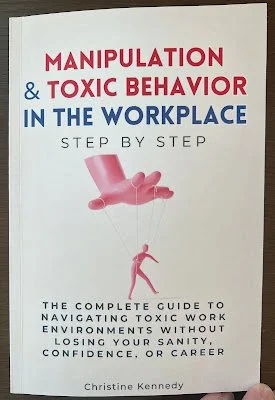Originally published on September 23, 2025.
BreakPoint Solutions was deliberately chosen as the name for my leadership development and consultancy firm in 2017. Not that the naming of any company or venture is ever random. But as it was launched, I realized there was an opportunity to capture the essence of what this venture was going to be about, who we wanted to be, and what we hoped to achieve. The definition is intended to convey the power of coaching, leadership self-awareness, and strategic intent that encompasses our work here at BreakPoint:
"an intentional stopping point or place to pause, an opportunity to derive new knowledge, establish commitment to a new direction in one's career or life...allowing one to evaluate a current path, effort and results, inspect one's environment, and reset for future success."
Singular events like COVID; conflicts in the Middle East, Ukraine, Africa; and even major weather events can put our lives into a definitive - if involuntary - pause and, at the very least, a short-term enforced resetting of priorities. Some of these events can cause us to question future direction and present action. Should we ride out the particular storm? Should we change directions? What is the timing related to those major decisions? How fast or slow should we move? Do our core beliefs or values still serve us?
Beyond managing and/or leading through these major events, how can we, as leaders and individuals, effectively and constructively use these times of enforced pause? One of the requirements of leaders is to avoid getting caught up in the crisis of the moment. We are singularly called to think strategically, keep our "eyes up", and chart a course across the stormy waters through to the murky future. Or, even more powerfully, convince those we lead that far from being murky, we have been able to craft a very clear and powerful vision to which others should follow us. As leaders we have to act to calm the waters for those who we purport to lead, not add gas to the proverbial fire. Easier said than done I know. I also realize that for some businesses, the long-term feels like it can only be measured in months, weeks, or even days as we keep an eye on cash reserves and expenses.
As an executive coach, entrepreneur, and small business owner I have always tried to practice what I preach. Not to simply throw tools, templates, and resources at my clients without actually putting those same tools to use in developing and guiding my business and personal development.
What do times of pause mean to me? What does it cause me to do? How am I remaining strategic and visionary while riding the waves of sometimes storm-tossed seas? How am I using a BreakPoint? How am I creating a BreakPoint?
I've consistently gone back to at least two tools or resources on a consistent basis. At the first and simplest level, I review my own leadership and personality assessments. This includes emotional intelligence, Total Strengths Deployment Inventory (TSDI), and Myers-Briggs. Why am I doing this? I recognize that at times I am - and we all do - operating under new, sustained, and significant stresses in all aspects of our lives (personal and professional) and may then not be not operating from our best place. The review of my assessment results helps me make the unconscious conscious, arms me with a better ability (with effort) to slow down and reset, and ultimately be in a better place to continue to be relatively sane, productive, and present for others.
The other core tool for me is my own personal business plan. While I have always approached the concept of this plan - and strategic planning in general - as a dynamically supportive process and document, it has been made abundantly clear through 25+ years of leadership experience and 13+ years of coaching/consulting that the assumptions that inform our plans at any point in time must continually be evaluated and rightsized. As the environment around us changes we must touch base with our preferred vision, re-evaluate our values, and certainly reset strategies and tactics accordingly. This is simple, honest, and realistic.
Throughout this process I still have choice in terms of how I respond to my changing reality. For some, a crisis might reinforce the futility of planning at all. What's the point? We are merely railing against the wind and creating the delusion of control. I don't believe that. I'm not content to believe that I am merely subject to the winds of predetermined fate. I don't believe that any of us can truly function without a sense of our core self and a desired future state we wish to achieve. But then I have always remained idealistic despite a number of significant bumps in both my personal and professional life.
This is where the value of my personal business plan comes into play. This is more than just a plan for the business of BreakPoint Solutions or my own individual coaching/consulting practice. It encompasses concepts of Mission, Vision, Values, short through long-term objectives, strategies, and tactics. It also encompasses the entirety of planning for the WHOLE of me: personal, family, and professional.
The need for an ongoing review of the plan has always been reinforced by new environmental realities. These points of assessment have helped reinforce the essential soundness of my Mission and Vision. I am confident that I am pursuing the right things for the right reasons.
Strategies, tactics, and targets for any given time are definitely dynamic - and this also provides the opportunity to ensure I am living in accordance to my stated Values. While things like vacations in Europe might have to be reconsidered, or the purchase of the Star Trek Lego set deferred, what has been reinforced is the need to spend quality time with a supportive network. Balance and Fun remain essential. I just need to do it differently right now.
From a business and professional standpoint, my Values and the rest of my plan call me to continue to focus on being of service to my clients. Coaching has never been more relevant to those being challenged by a dynamically changing environment. Connection versus isolation. My personal points of pause have always afforded me the opportunity to invest in a range of offerings that have been in my idea bucket for months, if not years. I've pulled the trigger on getting some of these products trademarked and copyrighted. I'm still building the legacy for years to come despite short-term challenges.
Long story short, any pause, while at first unwelcome, can form the basis for resetting, getting further clarity on what is important and what is necessary, and sets the foundation for greater strength coming out of the storm when it passes.
Don't just wait for a forced pause. Create your own regular BreakPoints to your best advantage. Be strategic and intentional in getting off of your personal treadmill. Slow down to go fast. Establish and confirm your priorities. Build hope for yourself, your team, and your family. You can take advantage of a "crisis" in this way AND you create an enforced pause to your advantage. We can build stronger foundations. We can continue to live our Mission fully and achieve our long-term Vision. It's About Leadership and It's About Leadership of Self.
———————————————————————————————————
Greg Hadubiak, MHSA, FACHE, CEC, PCC
President & Founder, BreakPoint Solutions
gregh@breakpoint.solutions
www.breakpoint.solutions
780-918-0009

















































